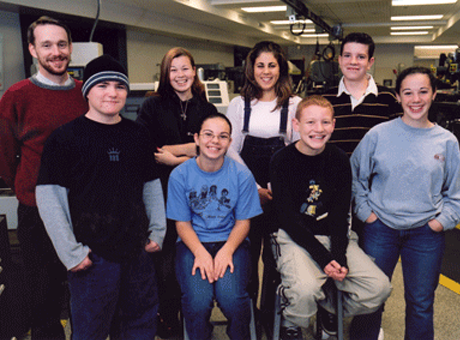Smith Academy InvenTeam
The Smith Academy InvenTeam, known as the Hatfield Design Group, chose to focus on cultivating solar energy to provide light via a simple product for all people to use. In many areas of the world, electricity is scarce or unaffordable. Research showed that the majority of consumer solar energy equipment is in the form of large household systems that have been installed in niche markets within construction. The Hatfield Design Group decided to create an inexpensive solar-powered house lamp that can focus ambient daylight and store it for nighttime use. In creating the lamp, they also hoped to broaden consumer knowledge about the importance of conserving energy. The Hatfield Design Group envisioned a lamp that was small, cost-efficient and consumer-oriented, while incorporating photovoltaics into a self-contained appliance. The students intended the lamp to be used daily, and consequently, to build consumer confidence in renewable energy as a reliable source. The Hatfield Design Group crafted a solar powered reading lamp that collects and converts daytime solar energy into an available nighttime light source. The product has two parts: a charging station—a low profile, unobtrusive component which collects, converts and stores solar energy—and a separate portable lamp. Though the team was aiming for efficiency, they also deemed it important that the model be attractive enough for daily use in the home. The Hatfield Design Group used a structured design cycle as a roadmap to focus creativity and ensure that minimal energy was wasted. The plan was divided into three stages: the Concept Phase, Input Phase and Output Phase. First, in the Concept Phase, students researched what had already been done in this area and brainstormed what they wanted their product to accomplish. They then produced formal product specifications. The Input Phase was the most difficult phase; here the team encountered technical obstacles. They worked in specialized functional teams to work out the details. The students collaborated to determine, through trial and error, which route was best for their product. The Output Phase involved fusing theory and reality. After testing each potential system, generation I prototypes were assembled and the design was reviewed. The review panel consisted of four knowledgeable science professionals who served as mentors to the team. The professionals included Dawn Striker, a teacher at Frontier Regional High School; Howard Bernard, a teacher at West Springfield Public High School; Eric Howard, a physics teacher at Longmeadow High School; and John Fabel, a Visiting Lecturer of Design at Hampshire College. Kenneth McLean of Kollmorgen Corp. also provided guidance. The Hatfield Design Group learned valuable skills through their invention process, including reading and drawing schematics, molding and casting, circuit board assembly, soldering and CAD operation. Teamwork and determination drove this group to succeed despite the design challenges they encountered.


